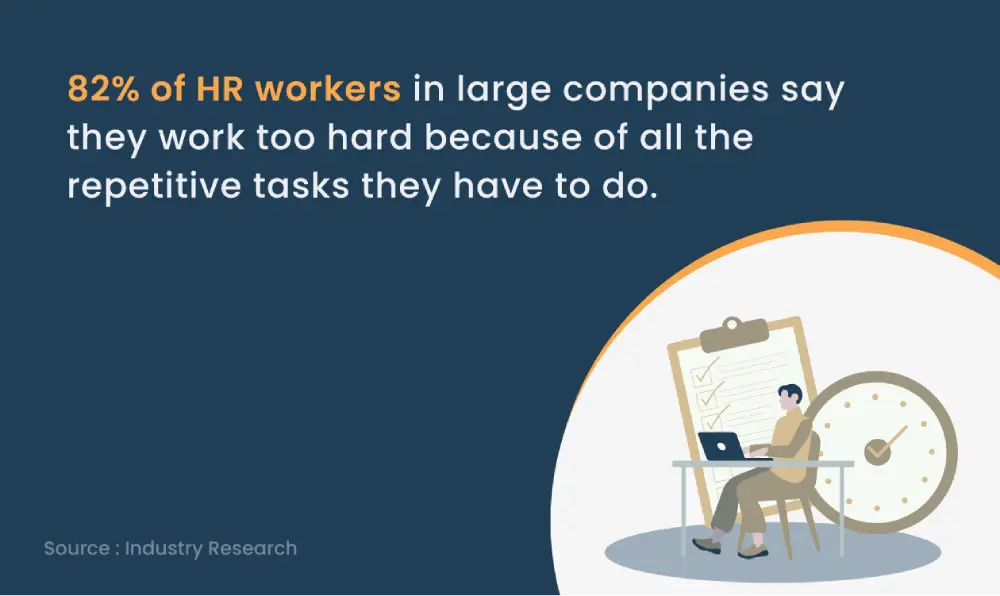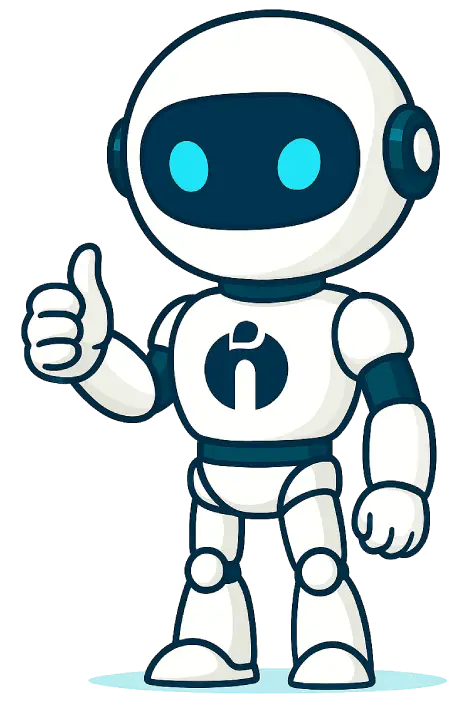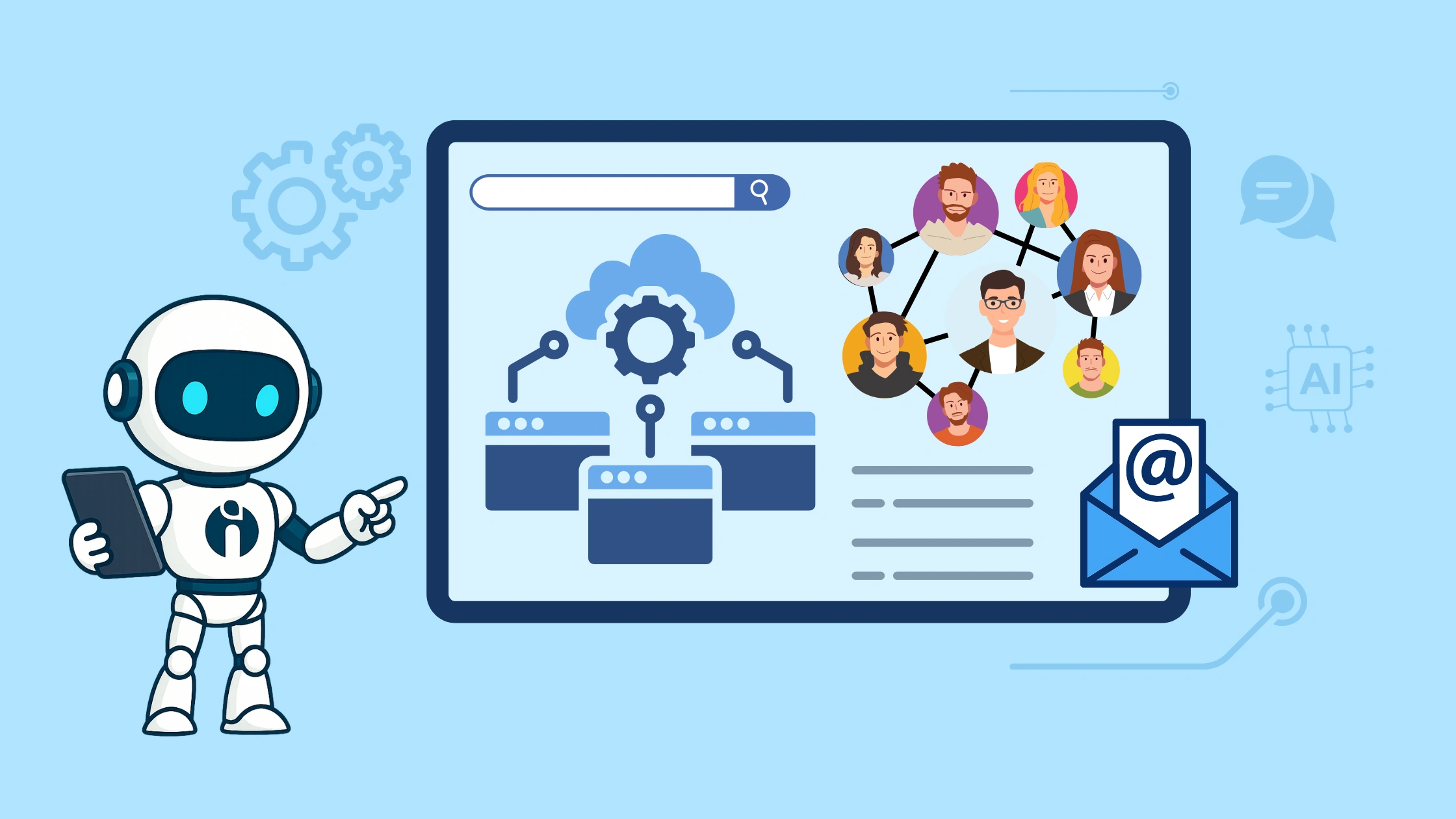TL;DR
- Recruiting CRM software can save significant time and money by automating manual data entry and repetitive tasks.
- Effective CRM implementation improves data accuracy, centralises candidate information, and enhances the candidate experience.
- Integrations with ATS, email, and communication tools streamline workflows and reduce disconnected systems issues.
- Advanced CRM features like AI-powered matching and job board integration help find and engage the right candidates faster.
Introduction
You can save approximately $77k and 900 hours annually that would otherwise be wasted on manual data entry for reporting alone, by solving recruiting CRM software challenges. Manual tracking consumes countless hours each week without a proper recruiting CRM system, which leads to poor candidate experiences and unnecessarily long turnaround times.
Overcoming recruitment challenges through effective CRM implementation offers far more than time savings. According to industry experts, changing your approach becomes imperative to avoid growing business disadvantages when current solutions don't meet expectations.
A well-implemented recruitment CRM centralises all records with real-time updates, automates repetitive tasks, and enables personalised candidate engagement. It ultimately reduces paperwork and frees your HR team for more human-centric responsibilities. Successful recruitment CRM adoption and implementation starts with strategy, and most importantly, recruiting CRM information.
Time and Process Inefficiencies
What manual tasks are slowing down the hiring process?
The old-fashioned recruitment process takes up a lot of time and slows down productivity. HR people often spend 1 to 2 hours posting a job on different websites while still handling their other tasks. According to industry research, 82% of HR workers in large companies say they work too hard because of all the repetitive tasks they must do.

These inefficiencies create tangible consequences:
-
Extended hiring timelines (up to 50% longer compared to automated processes)
-
Decreased recruiter morale and productivity
-
Higher risk of missing top candidates who are typically off the market within 10-14 days
The impact extends beyond just time. Like, manual processes frequently result in errors, inconsistencies, and disconnected information flow that damages your efficiency and candidate experience.
How does CRM automation speed up recruiting things?
Recruitment CRM software tackles these challenges head-on by automating your most time-consuming tasks. Automation makes key recruitment tasks easier, like screening resumes, setting up interviews, and following up with candidates; all done automatically. This lets your team focus on building stronger relationships.
A well-implemented recruitment CRM is a game-changer for HR. Automated processes ensure consistent quality and eliminate unnecessary tasks. The hiring process won’t slow down your recruiters anymore, and you’ll notice an improvement in their work when they focus on more critical tasks.
How can recruiting CRM help reduce paperwork and admin load?
The administrative load in conventional recruitment methods is mainly responsible for pulling down productivity. A recruitment CRM ensures the digital security of documents, and it completely eliminates the need for paper. Prospects fill out their forms via the web, thus automatically inputting their data into the shared files.
Automation also reduces administrative workload through:
-
Automatic document collection and new hire checklists
-
Streamlined compliance documentation
-
Centralised storage of all candidate interactions
The hiring team could use the time spent on admin tasks to build better relationships with candidates or focus on other essential hiring decisions. With CRM automation, your recruitment process could become faster and more efficient. It would move away from slow, paper-based work and turn into an automated system that focuses more on relationships.
How Can Data Management and Accuracy Be Improved?
Improper data handling isn’t just annoying, it’s expensive. A study by QX Global Group shows that incorrect information costs businesses around £10.24 million a year. Despite this, it's still one of the biggest recruitment challenges that often gets overlooked.
Problems with outdated or duplicate data
Nearly 30% of candidate data becomes outdated within just one year, creating major bottlenecks in your hiring process. Outdated contact details, expired certifications, and incorrect job titles don't just waste time; they fundamentally obstruct hiring. Consider what happens when:
-
Recruiters waste hours reaching candidates whose information is no longer valid
-
Matching tools fail without current job roles or skills data
-
Duplicate entries force recruiters to review the same candidates multiple times
This disorganisation significantly hinders your ability to find qualified talent quickly. Furthermore, duplicate profiles slow down database searches and confuse your recruitment team.
Real-time updates and centralised records
A recruitment CRM solves these challenges by centralising all candidate information in one accessible location. Instead of jumping between different websites, tools, or spreadsheets, your CRM becomes the single source of truth for all candidate data.
Real-time recruitment metrics provide immediate insights into open positions, candidate status, and hiring progress. This centralised approach enables you to track interactions, manage communications, and stay on top of requirements through one unified platform.
Improving candidate experience with accurate data
Accurate data significantly enhances the candidate experience. Primarily, it prevents the embarrassment of reaching out with irrelevant opportunities to candidates who've already changed industries or locations.
This improved data management leads to faster, more accurate matching between candidates and positions resulting in higher engagement rates and more positive experiences throughout the recruitment process.
How are Disconnected Systems and Tools Problematic?
Running between multiple disconnected recruiting platforms creates a technological maze that slows your hiring process. This fragmentation is a significant obstacle to efficiency in today's recruitment landscape.
The issue with non-integrated platforms
Working with non-integrated systems forces you to constantly switch between applications, copying and pasting information between platforms. This disconnected approach creates data silos, unnecessary complexity, and significant inefficiencies. The consequences are clear:
-
Too many separate tools lead to duplicated work and constant tab-switching
-
Non-integrated financial processes increase errors and expose your organisation to audit risks
-
Isolated systems make tracking candidate interactions nearly impossible
Amy Bingham, Managing Partner of Bingham Consulting Professionals, says that "Divorce is not an option" about separating recruitment software from email systems. Even though many recruiters still operate in this fragmented reality.
CRM integrations with ATS, HR, and email tools
Modern recruitment CRMs solve these challenges through comprehensive integrations. Most commonly, they connect with:
-
Applicant Tracking Systems - Creating a seamless transition when candidates move from sourcing to application
-
Email platforms - Syncing Google, Zoho, Office365 or other mailboxes directly within your CRM
-
LinkedIn Recruiter - Allowing profile exports and viewing member profiles directly within your CRM
You can collaborate with hiring managers more effectively when your CRM connects with workplace communication tools like Slack and Teams.
Streamlining workflows through system sync
Synchronised systems primarily benefit your recruitment workflow through centralisation. Furthermore, email integration automatically documents all correspondence with candidates and clients, eliminating the need for manual copying and pasting. This synchronisation ensures all team members can access complete communication histories, which prevents duplicate outreach.
Above all, integrating your recruitment systems means you'll no longer need to update multiple platforms manually - when information changes in one system, it updates everywhere. This coordinated approach ultimately creates a smoother candidate journey while freeing your team to focus on building meaningful relationships rather than managing technology.
How Can You Find and Engage the Right Candidates More Effectively?
What are the limitations of manually sourcing candidates?
The manual candidate screening process brings several critical problems. First, it's incredibly time-consuming, limiting recruiters' ability to focus on relationship-building activities. Additionally, unconscious bias frequently impacts candidate selection, potentially eliminating qualified talent before they even get a chance. Perhaps most concerning is that reactive recruiting (starting the search only after a position opens) leads to rushed decisions and potential bad hires. It potentially costs employers up to one-third of an employee's first-year salary.
CRM features for auto-matching and job board integration
Modern recruiting CRMs offer robust solutions through:
-
AI-powered matching algorithms that automatically review qualifications and sort candidates into categories like "Best Fit" or "Good Fit"
-
Job board integration that allows posting to multiple sites simultaneously, increasing your candidate pool
-
Automated resume screening that identifies the most suitable candidates based on skills and experience
These features dramatically reduce sourcing time while improving match quality. Indeed, some organisations save up to 5 hours weekly per recruiter on sourcing and outreach.
Personalised communication and engagement tracking
Personalisation is essential. Recruiting CRMs enable personalised communication through automated yet customised emails, texts, and follow-ups. Furthermore, engagement tracking helps prioritise actively interested candidates, allowing tailored messaging to maximise conversion.
How does Recruiting CRM help reduce time-to-hire?
Ultimately, these CRM capabilities directly impact hiring speed. By implementing these tools, organisations like LHC International get impressive results, including a 30% reduction in time-to-hire and a 35% increase in overall quality of hire. By creating talent pools and groups of pre-screened candidates, you can immediately match qualified people to new openings without starting from scratch.
Conclusion
Understanding the challenges that can be solved with the use of recruitment CRM software shows that traditional methods are no longer effective in the competitive hiring market. Here, you know how CRM solutions solve problems like time management, data mistakes, disorganised systems, and talent acquisition issues efficiently.
With recruiting CRM, all candidate data stays accurate and up-to-date, so your team can focus on the right candidates instead of wasting time on outdated ones or repeating tasks. Integrating systems also removes many technical difficulties recruiters face daily. It allows the team to concentrate on building relationships with candidates. This streamlined approach significantly reduces time-to-hire, with some organisations like Wesearch reporting up to 50% improvement after implementing recruiting CRM tools like iSmartRecruit that offer a free demo before any strict commitment.
Indeed, choosing the proper recruitment CRM requires careful consideration of your specific needs. However, as hiring grows more complex, those who embrace these solutions gain a substantial competitive advantage while those relying on manual methods risk falling further behind.
FAQs - Frequently Asked Questions
What are the main benefits of using a recruitment CRM?
Recruitment CRMs save time by automating tasks, improve data accuracy, and enhance candidate experience. They streamline processes and help HR teams focus on building relationships, making hiring more efficient using tools like iSmartRecruit.
How does CRM automation improve the recruitment process?
Automation reduces repetitive tasks such as resume screening and interview scheduling. This speeds up hiring, ensures consistency, and lets recruiters concentrate on candidate engagement, improving overall productivity.
Can integrating my CRM with other tools boost efficiency?
Yes, connecting your CRM with ATS, email, and communication platforms creates a seamless workflow. It prevents data silos and manual updates, making collaboration smoother and hiring processes faster.
How does accurate data management benefit candidate experience?
Accurate data ensures relevant opportunities reach candidates, avoiding confusion or repeated outreach. It leads to better matches and positive experiences, enhancing your organisation's reputation with candidates.













.webp)

